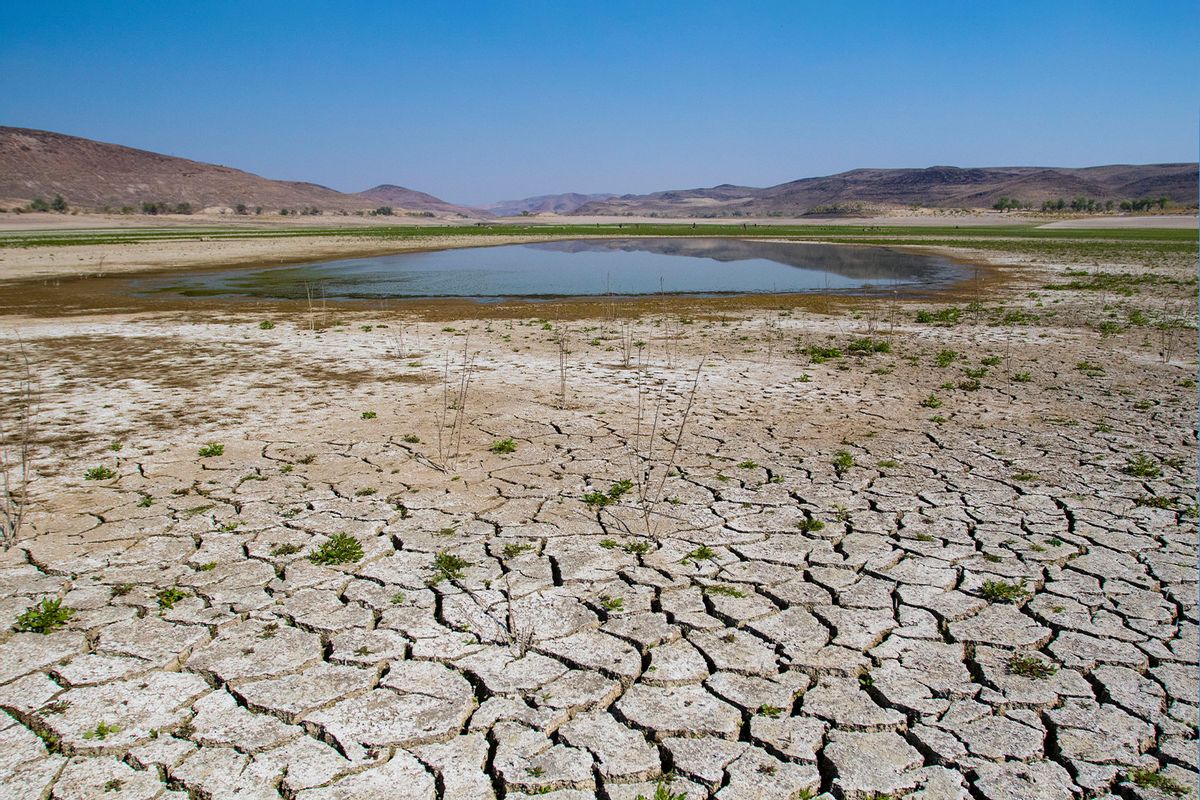Imagine a future in which one-fifth of the planet is regularly subjected to boiling heatwaves and blistering droughts. In addition to the unbearable discomfort of the constant heat, people in those regions will struggle to breathe. The air is going to be filled with smoke, even if the massive fires that cause the smoke are destroying civilizations and wilderness thousands of miles away.
By the late 21st Century, it's predicted these so-called compound drought and heatwaves (or CDHW events) will happen roughly twice a year, each one lasting approximately 25 days, from eastern North America and eastern Africa to Central Asia, Central Europe and the American southwest.
"It's a 'new abnormal' and it is now playing out in real time—the impacts of climate change are upon us in the form of unprecedented, dangerous extreme weather events."
That is the "high-end scenario" yielded by a new study in the scientific journal PNAS. Even if that worst case situation does not come to pass, the scientists from five prominent American universities behind the study concluded that the recent series of heatwaves, wildfires and other extreme weather events are just the beginning. Unless humanity recognizes that these disasters aren't entirely "natural" — and indeed are caused by human influence on the climate — and act accordingly, humanity faces a future of horrid heatwaves and the consequent "increased risk on water, energy, and food sectors in critical geographical regions."
This conclusion was reached in a study of breathtaking comprehensiveness. The scientists drew from a wealth of state-of-the-art simulations including both historical and future-projected climate change. The sources of their data included the Global Precipitation Climatology Centre, where the researchers studied the observed daily precipitation between 1982 and 2019; the Climate Prediction Center, where they studied the observed daily maximum and minimum air temperature datasets (within certain parameters) for every day; and the Coupled Model Intercomparison Project 6, which they drew from to quantify projected CDHW event characteristics based on three potential emission forecasts. The scientists even used information from the most recent report by the United Nations' Intergovernmental Panel on Climate Change.
From there, the team "used a novel approach to characterize weather patterns in those models" explained study co-author Dr. Michael E. Mann, a professor of Earth and Environmental Science at the University of Pennsylvania, in an email to Salon. The researchers identified "those weather regimes that are simultaneously associated with both extreme heat and extreme drought — that very dangerous and damaging combination of weather conditions." According to fellow co-author Dr. Ashok Mishra, a professor at Clemson University's Department of Environmental Engineering and Earth's Science, any of these outcomes will bring about dire conditions for billions of people.
"Compound drought and heatwaves severely threaten socio-ecological systems, leading to greater impacts — e.g., wildfires, crop failure, and heat-related mortalities — than individual extremes," Mishra wrote to Salon. That said, the impacts will not be universal: much will depend on where a person lives while these CDHW events occur.
"The disparities in CDHW occurrence and severity between the Southern and Northern Hemispheres emphasize the need for tailored adaptation and mitigation strategies in different parts of the world," Mishra pointed out. "These findings underscore the importance of developing comprehensive policies and practices to minimize the impacts of CDHW events, safeguard critical sectors like water, energy, and food, and enhance resilience in the face of increasing risks associated with climate change."
Want more health and science stories in your inbox? Subscribe to Salon's weekly newsletter The Vulgar Scientist.
"Compound drought and heatwaves (CDHWs) severely threaten socio-ecological systems, leading to greater impacts — e.g., wildfires, crop failure, and heat-related mortalities — than individual extremes."
Elaborating on these dangers, Mishra pointed out that as heatwaves and droughts compound on each other, society will break down on multiple levels. For example, important livestock animals like cows, pigs, chickens and sheep will start dying in large numbers. Yields for staple crops like wheat, corn, soy and rice will decline, and in order to adequately feed the planet, the agriculture industry will need to "adopt resilient farming practices, such as water-efficient irrigation methods and heat-tolerant crop varieties."
Energy will likewise be negatively impacted, as CDHW events can strain electricity grids (as mass cooling demands overtax facilities' capabilities) and reduce the water available for effective hydropower generation. Indeed, water overall will be more scarce, as "both droughts and heatwaves increase evaporation rates and diminish water availability."
As a result, Mishra observed that "energy planners and policymakers need to consider the resilience and adaptability of energy infrastructure to cope with the increased energy demand caused by CDHW events."
Additionally, Mishra pointed out that civic leaders need to "implement sustainable water management strategies, including water conservation measures and investments in water infrastructure, to ensure a reliable water supply during CDHW events."
Public health overall is at risk by the increased number of future CDHW events. "Heatwaves can lead to heat-related illnesses, while drought conditions can impact water quality and availability, potentially affecting sanitation and hygiene," Mishra explained. "It is crucial for public health agencies to proactively implement comprehensive drought and heatwave preparedness plans."
Although the researchers urge societies to begin preparing for the worst when it comes to these compounds heatwaves and droughts, that does not mean they support conceding to a world where climate change has run amok. Quite to the contrary, they hope people will reject these conditions as a "new normal."
"As I recently wrote with my colleague Susan Joy Hassol, we must stop calling this a 'new normal,'" Mann wrote to Salon. "It's a 'new abnormal' and it is now playing out in real time — the impacts of climate change are upon us in the form of unprecedented, dangerous extreme weather events. And it will only get worse and worse as long as we continue to burn fossil fuels and generate carbon pollution."



Shares